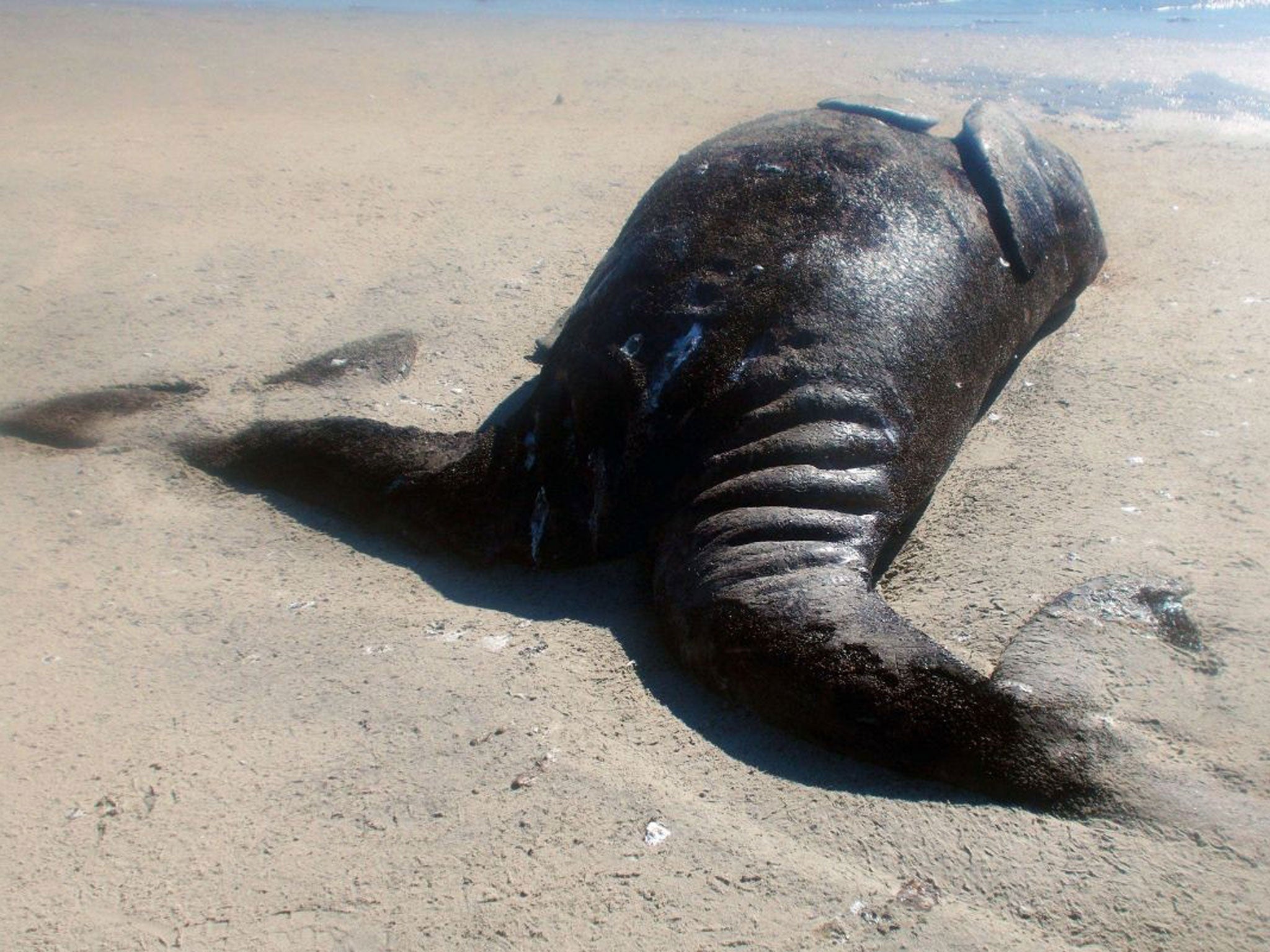Conjoined gray whale calves discovered in Mexican lagoon could be world's first ever documented find, experts say
Experts said that while other species have been found to have conjoined twins, the find is ‘without any precedent’ among gray whales

Your support helps us to tell the story
From reproductive rights to climate change to Big Tech, The Independent is on the ground when the story is developing. Whether it's investigating the financials of Elon Musk's pro-Trump PAC or producing our latest documentary, 'The A Word', which shines a light on the American women fighting for reproductive rights, we know how important it is to parse out the facts from the messaging.
At such a critical moment in US history, we need reporters on the ground. Your donation allows us to keep sending journalists to speak to both sides of the story.
The Independent is trusted by Americans across the entire political spectrum. And unlike many other quality news outlets, we choose not to lock Americans out of our reporting and analysis with paywalls. We believe quality journalism should be available to everyone, paid for by those who can afford it.
Your support makes all the difference.A pair of conjoined gray whale calves have been found dead off the coast of Mexico, in what scientists believe could be the first discovery of its kind.
Joined at the waist, the creatures weighed nearly half a tonne and measured around 4 metres (13ft) long.
Experts said it would have been virtually impossible for the twin whales to have survived – at around half the length of an average gray whale, they would likely have been born prematurely.
The animals were discovered in the Ojo de Liebre lagoon, which opens onto the Pacific Ocean and is one of a number of prominent breeding sanctuaries used by gray whales on the Baja California peninsula.
The find was verified after a visit on Monday by the National Natural Protected Areas Commission (CONANP).
Marine biologist Benito Bermudez, CONANP’s regional manager, told the AFP news agency the discovery was “exceptionally rare, without any precedent” to his knowledge.
While examples of conjoined twins have occurred in other whale species such as fin, sei and minke, it is thought there are no previously published discoveries of the phenomenon in gray whales.
Alisa Schulman-Janiger, a researcher with the American Cetacean Society, told Grind TV there were concerns that with the twins severely underdeveloped, the birth or possibly stillbirth might also have killed the mother.
A video of the discovery of the animals on Sunday was uploaded to YouTube by Krystian Abundez, and images were posted to the Facebook group of local conservationists Guerrero Negro Verde, with the translated statement: “Unfortunately, the specimen died. [Its] survival was very difficult.”
The carcass of the whales has been taken away for further study by a government agency.
Every year hundreds of gray whales migrate around 6,000 miles from the Bering Sea to the warmer waters of Mexico’s west coast. Most have calves during the last week of December and the first two weeks of January, and nurse for a number of weeks before making the long return journey north.
Join our commenting forum
Join thought-provoking conversations, follow other Independent readers and see their replies
Comments